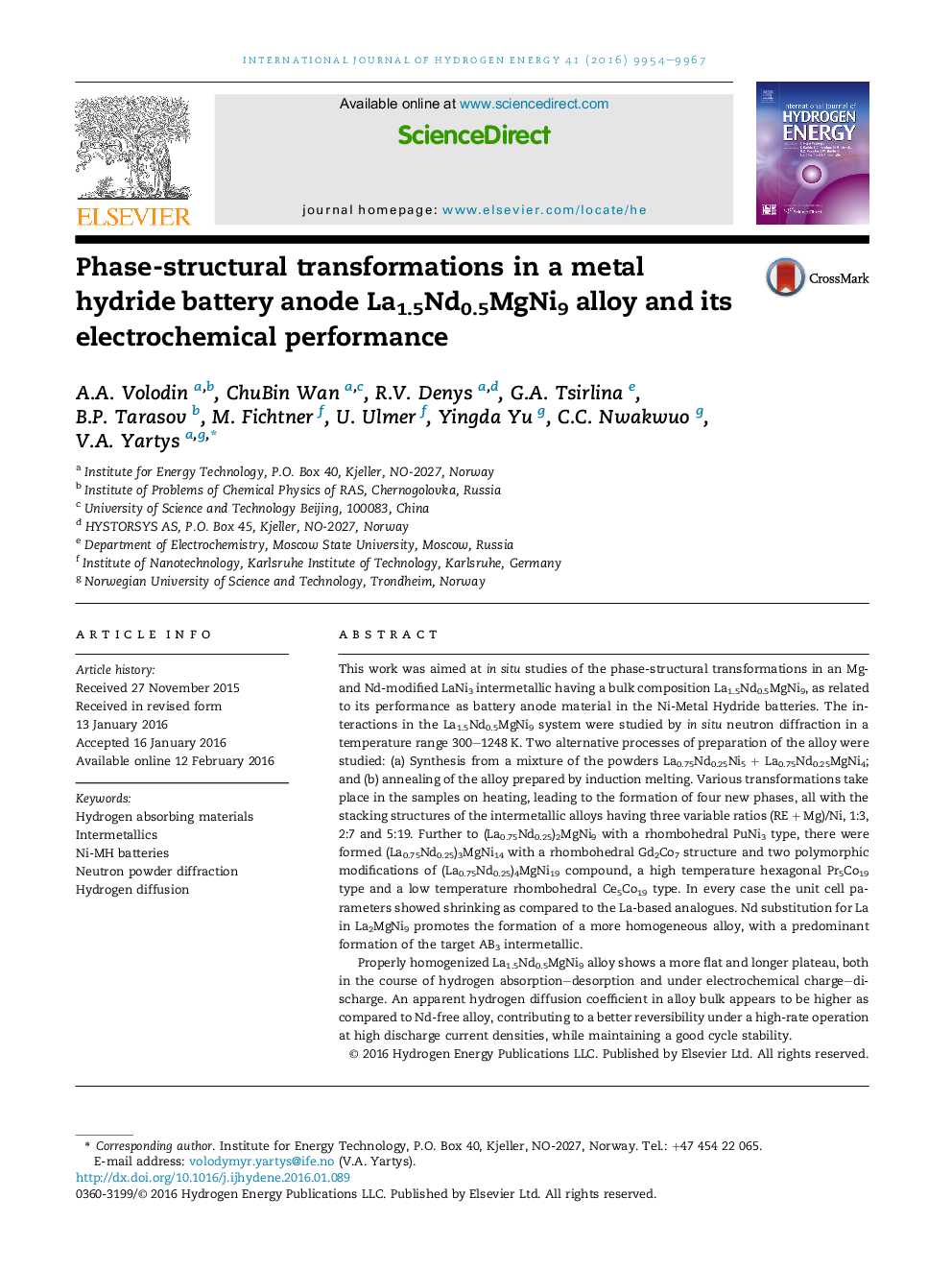| Article ID | Journal | Published Year | Pages | File Type |
|---|---|---|---|---|
| 1277049 | International Journal of Hydrogen Energy | 2016 | 14 Pages |
•La1.5Nd0.5MgNi9 was prepared by induction melting and from the precursors RENi5 + REMgNi4.•In situ studies of the transformations in La1.5Nd0.5MgNi9 were performed using NPD at 300–1248 K.•Four stacking structures of the intermetallic alloys were formed.•Properly homogenized La1.5Nd0.5MgNi9 alloy shows a more flat and longer plateau of H absorption–desorption.•Apparent hydrogen diffusion coefficient in alloy bulk appears to be higher as compared to Nd-free alloy.
This work was aimed at in situ studies of the phase-structural transformations in an Mg- and Nd-modified LaNi3 intermetallic having a bulk composition La1.5Nd0.5MgNi9, as related to its performance as battery anode material in the Ni-Metal Hydride batteries. The interactions in the La1.5Nd0.5MgNi9 system were studied by in situ neutron diffraction in a temperature range 300–1248 K. Two alternative processes of preparation of the alloy were studied: (a) Synthesis from a mixture of the powders La0.75Nd0.25Ni5 + La0.75Nd0.25MgNi4; and (b) annealing of the alloy prepared by induction melting. Various transformations take place in the samples on heating, leading to the formation of four new phases, all with the stacking structures of the intermetallic alloys having three variable ratios (RE + Mg)/Ni, 1:3, 2:7 and 5:19. Further to (La0.75Nd0.25)2MgNi9 with a rhombohedral PuNi3 type, there were formed (La0.75Nd0.25)3MgNi14 with a rhombohedral Gd2Co7 structure and two polymorphic modifications of (La0.75Nd0.25)4MgNi19 compound, a high temperature hexagonal Pr5Co19 type and a low temperature rhombohedral Ce5Co19 type. In every case the unit cell parameters showed shrinking as compared to the La-based analogues. Nd substitution for La in La2MgNi9 promotes the formation of a more homogeneous alloy, with a predominant formation of the target AB3 intermetallic.Properly homogenized La1.5Nd0.5MgNi9 alloy shows a more flat and longer plateau, both in the course of hydrogen absorption–desorption and under electrochemical charge–discharge. An apparent hydrogen diffusion coefficient in alloy bulk appears to be higher as compared to Nd-free alloy, contributing to a better reversibility under a high-rate operation at high discharge current densities, while maintaining a good cycle stability.
Graphical abstractFigure optionsDownload full-size imageDownload as PowerPoint slide
